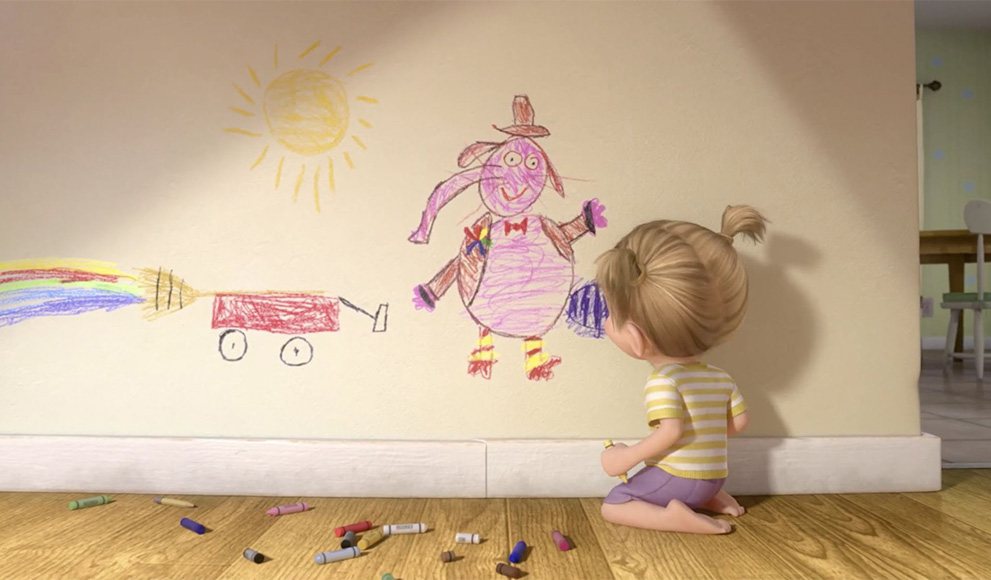PRI's Science Friday Features Tracy Gleason, Professor of Psychology, on the Role of the Imaginary Friends for Children

Imaginary companions come in many forms—even a herd of miniature, many-colored cows, or a companion in the shape of a can of tomato sauce. Public Radio International (PRI) recently explored the fascinating role the imaginary friend plays for children in a segment on the nationally distributed show Science Friday, which aired on the local NPR station; the show also produced a series of web videos called The Real Guide to Imaginary Companions. Both prominently featured Tracy Gleason, professor of psychology and psychological director of the Child Study Center at Wellesley.
Gleason spoke with Science Friday host Ira Flatow about her experiences studying children with imaginary friends and what can be learned about these children. Explained Gleason, "I think the most important message is just to have fun with it. I think parents run into trouble if they try to control it. Remember that children are the experts on these imaginary companions. And so you kind of have to defer to them. But at the same time, parents can put limits on when these companions can appear and what they can do and not do."
Gleason said, "[T]here are probably as many reasons why children create imaginary companions as there are companions themselves." Children can imagine many kinds of imaginary companions, from "invisible creations, something that the child creates…out of nothing," to "stuffed animals, dolls, blankets…any object that the child animates and personifies," to even what Gleason said are called pacacosms, whole worlds that are conjured by a child's imagination.
Many people are curious about what it means for a child to have had an imaginary friend. Gleason's study has provided some answers. She stressed, though, that children who have imaginary friends are "much more similar than they are different" from children who don't.
There may be small differences, however. "To a certain extent, children who create imaginary companions might be a little bit more social than some of their peers," she told listeners. "They tend to be pretty good at getting inside other people's minds, understanding what other people are thinking. And they also are pretty social. They really like interacting with other people. They may be a little less shy than other children."
Gleason told Flatow that a child might create an imaginary friend "to have a person who's around to play with any old time you want. Sometimes it’s helpful in figuring out how the world works, especially the social world. Sometimes it’s a place where you can experience emotions that are safe and that you can try to keep from being overwhelming." And a child's need for a make-believe friend can change over time, she said.
In her seminar course Social Imagination, the role imaginary friends play in childhood is one of the areas her students explore, as well as "a whole host of other imaginary relationships that people create throughout their lives," she said. She also uses the topic in her developmental psychology course. "Studying imaginary companions emphasizes the need for both qualitative and quantitative data," or in other words, "I try to give students an appreciation for the kinds of knowledge we can gain both from empirical research as well as close observation of behavior."
